Archaeologists, researchers, and historians are just a few of my personal heroes. Without them, we would not have the slightest knowledge about those who came before us, or the incredible artifacts they have left behind.
In a string of amazing discoveries in the past decades, specialists have unearthed countless objects that were used by our earliest predecessors in daily life — like these 800-year-old seeds that were planted to grow gigantic squashes!
Below, we'll take a look at some of the most fascinating artifacts of ancient daily life.
Historians have analyzed the makeup of the oldest clothes, the first type of jewelry, and even furnishings, undergarments, and footwear — and what they've found is incredible!
These ancient objects give an exclusive look into the daily lives of long-lost people — and reveal that, though separated by huge amounts of time, they're not all that different from us…
Scroll further to start reading about some of the world's oldest known daily objects, and let us know your thoughts in the comments below!
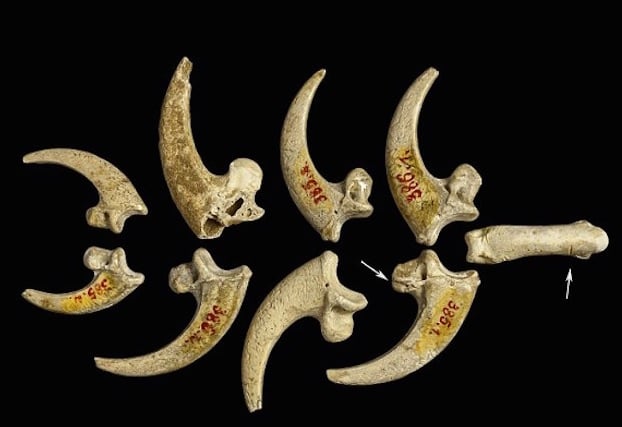
Earlier this year, researchers unearthed the world's oldest piece of jewelry — strung together with eight eagle talons.
Discovered in a Neanderthal site in Croatia, the decorated talons came from at least three separate birds, it had clear residue of polish, and it was likely either a bracelet or a necklace.
The Neanderthals were highly intelligent people who have left behind trails of art and religion. They likely used the eagle talons for ceremonial purposes, showing that they understood the meaning of symbolism.
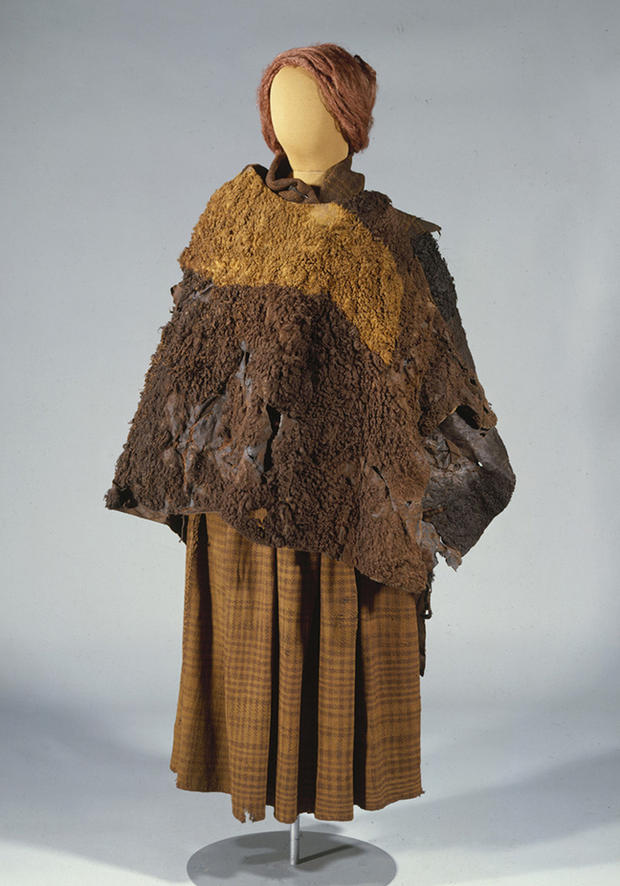
Found in 1879, Huldremose Woman is a bog body recovered on a Danish peninsula.
She had lived during the Iron Age, around 160 B.C.E. to 340 C.E., and is particularly noted for the intact "suit" that she was mummified in.
The preserved outfit included a long, woolen plaid skirt and a plaid scarf, two sheepskin capes, a light wool collar, and a dark brown wool body inside.
The bog turned the skirt and outer coat a muddy color, but pigment analysis has shown that the skirt was originally blue, and that the scarf was red.
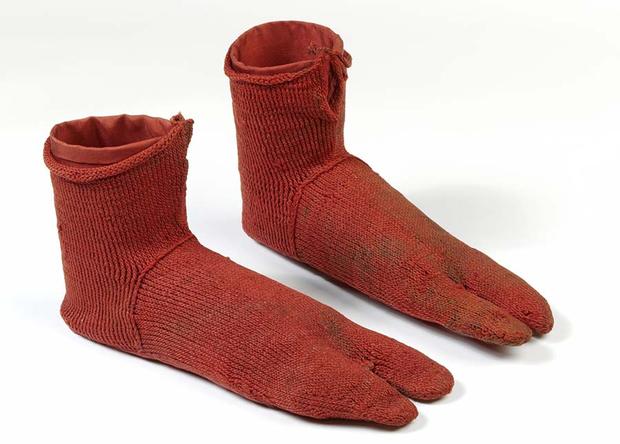
The oldest-known socks were made in the fourth to fifth century, and were discovered in Egypt in the late 19th century.
The socks have a divided toe, showing that they were worn with sandals.
Bound by three-ply wool, these socks were made using a technique called "nålebinding," which came before both knitting and crochet. Also dubbed "knotless knitting" and "single-needle knitting," it passed the full length of the thread through each loop.
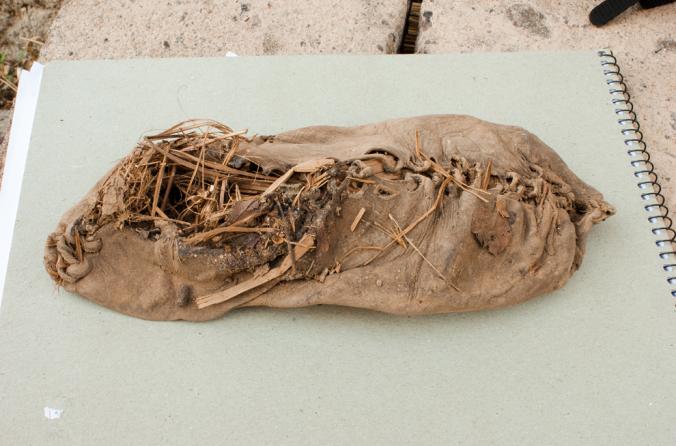
This 5,500-year-old shoe was found extremely well-preserved in an Armenian cave.
It measures around the same as a women's size 7 shoe, and was crafted from a single piece of cowhide.
The shoe runs a leather cord along the seams on both ends, and had been cut in two layers and tanned, which was quite a new technology at the time.
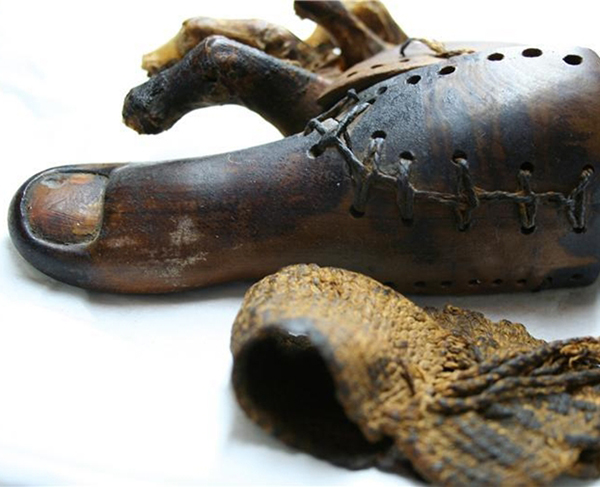
This 3,000-year-old prosthetic piece was not used for cosmetic purposes, but for actual, practical medical uses that helped a person walk again.
Injured patients could have walked barefoot instead, or could have worn some type of sock or boot over the false toe, but research has suggested that wearing the false toes made walking in a sandal infinitely more comfortable and convenient.
This artificial toe was made from wood and leather, and other kinds of toes dating back 2,500 years were made with plaster, linen, and glue.
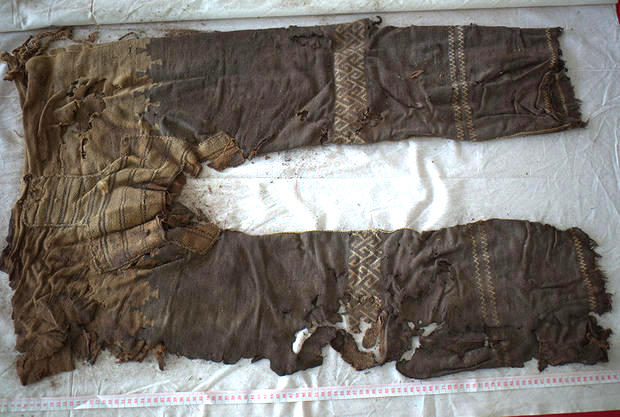
These wool pants were discovered in the Yanghai cemetery near Turfan, in northwestern China, and date back more than 3,000 years.
There is a zig-zag rhombic pattern at the bottom of the pants, and was made to be practical for the nomad traveling on horseback.
This was a rather miraculous discovery, as the pants spent thousands of years in a gravel desert that would measure 122 °F in the summer and -20 °F in the winter.
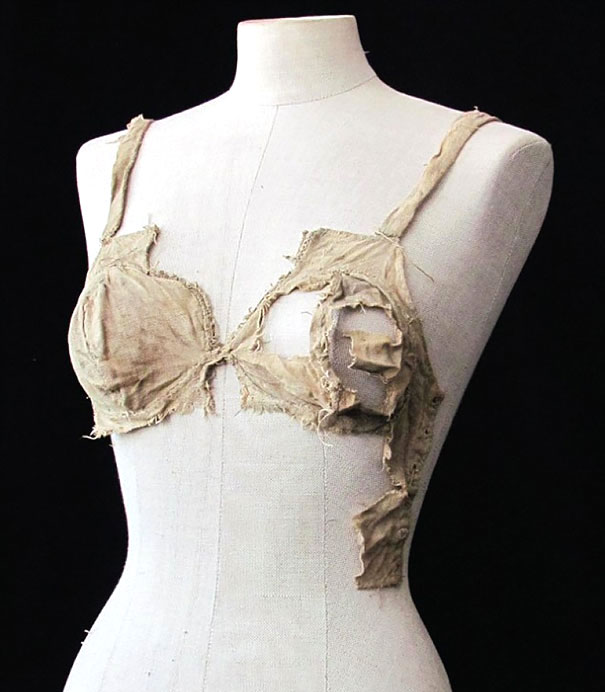
Used between 1390 and 1485, this bra was probably not the very first of its kind to be made, but it certainly is the first to be found.
Called "breast bags" in medieval written records, the bra was dug up by archaeologists in Lengberg Castle in Austria, and was found stored with linen shirts, men's underwear, and textiles.
Decorated with lace, the bra indicated that women back then most likely made undergarments themselves.
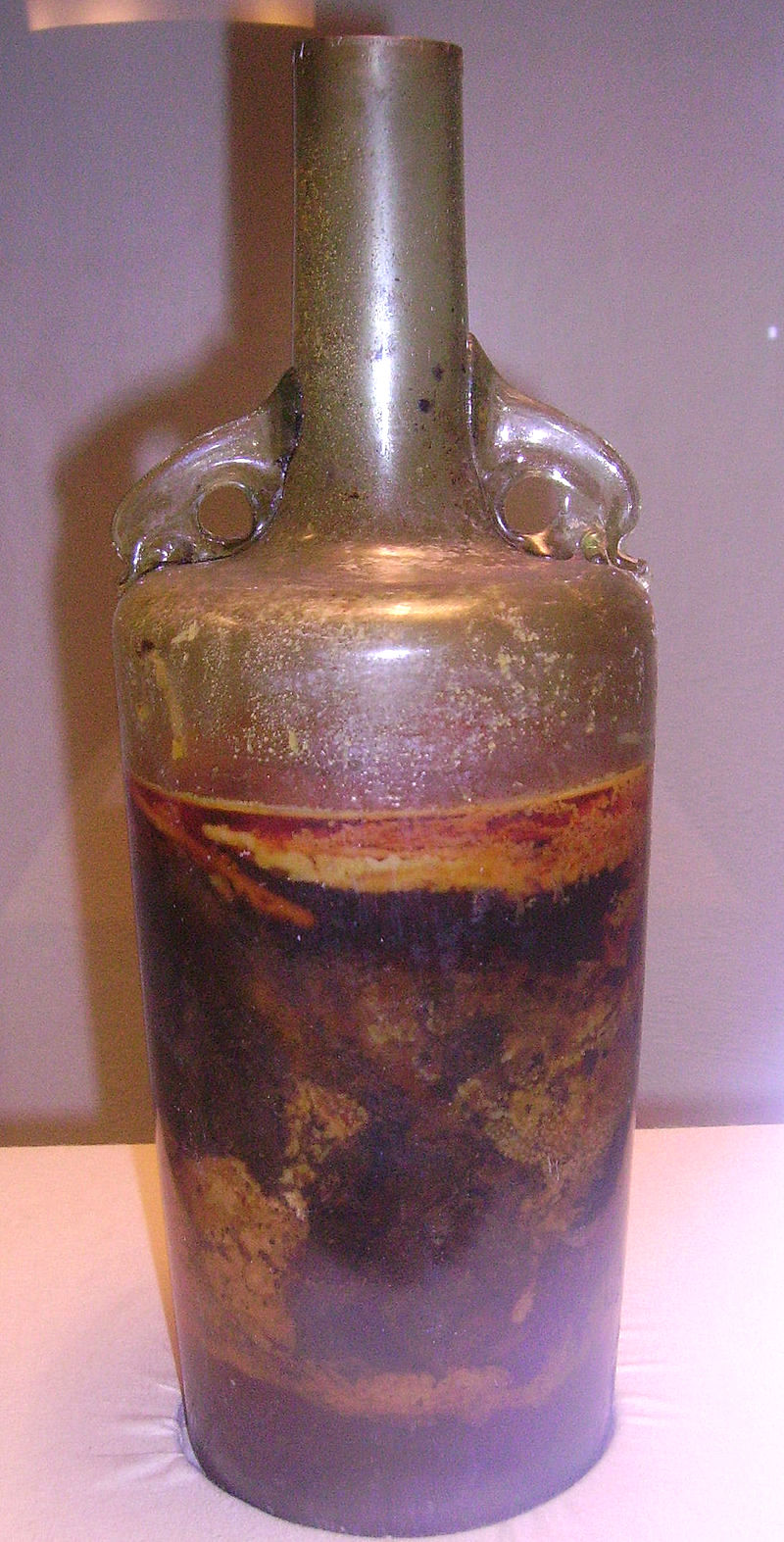
Discovered in 1867, the Speyer wine bottle is a sealed vessel that was dug up from a Roman tomb in southwestern Germany.
Officially listed as the "world's oldest bottle of wine," the bottle has lost most of its ethanol content, and, according to analysis, had been mixed with a combination of herbs.
The liquid has been very well-preserved with a large amount of thick olive oil, to close it off from air, and was sealed with hot wax at the top.
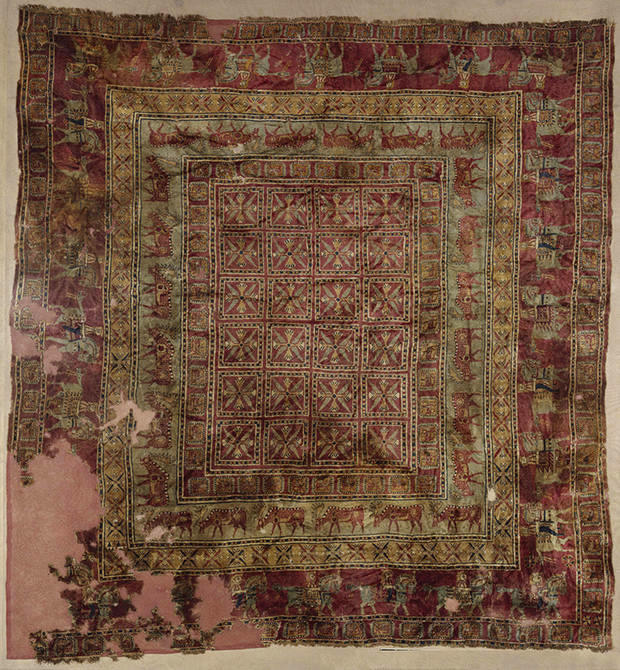
This is the Pazyryk carpet, which dates back 2,500 years ago. Woven using the symmetrical double-knot technique, the ancient carpet was found in the grave of an aristocrat in the dry Altai Mountains in Siberia.
It was once bright blue, crimson red, and yellow, and featured 24 lotus bud designs in the center. Bordering the central square is a pattern of griffins and fallow deer.
Twenty-eight men on horseback are depicted racing in a field, reflecting the life of those times.
Please SHARE if you love history!




